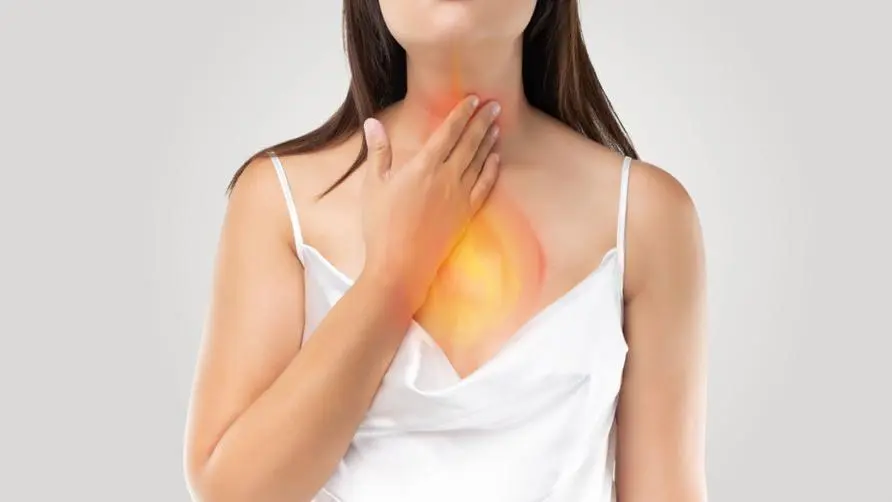Is eating less and less a sign of hernia? After she sought medical treatment for chest pain, she was shocked: her stomach had traveled from her abdominal cavity to her chest

“Little bird’s stomach” may cause big problems! She was shocked when she checked: her stomach had moved from the abdominal cavity to the chest cavity
If you feel that your appetite is not as good as before and your food intake is significantly reduced recently, please pay attention to the warning sign that it may be caused by “hernia”! Dr. Chen Zhaokun, the attending physician of the Thoracic Surgery Department of Chimei Hospital, said that he once treated a 53-year-old female patient. For many years, she had a clear sense of satiety after eating just a little. If she ate a little too much, she would develop chest pain, burning sensation and other symptoms. She thought she was It’s just a “little bird’s stomach” and doesn’t take it seriously.
Until recently, the patient had unbearable pain in his left chest and had to go to the hospital for emergency treatment. Further examination revealed that it was caused by “hiatal hernia”. The stomach had moved to the chest and twisted, causing pressure behind the heart and even squeezing it. The left lung affects lung capacity. Fortunately, Dr. Chen Zhaokun arranged laparoscopic minimally invasive surgery to reposition the stomach and abdominal tissue to repair the hernia, and performed anti-reflux surgery. The patient is currently recovering well after the surgery, eating stably, and was discharged successfully after a few days and is being followed up regularly at the outpatient clinic.
Affects the operation of up to 5 organs! Doctors reveal the four major types of hiatal hernia
Dr. Chen Zhaokun pointed out that hiatal hernia, also known as “hiatal hernia”, refers to the entry of abdominal organs into the chest cavity through the hole in the diaphragm through which the esophagus originally passed. Most of the risk factors are the damage caused by age and near the hiatal hernia. It is caused by aging muscles, excessive abdominal pressure for a long time, or trauma. Hiatal hernias can be divided into the following 4 types according to their severity, and their symptoms and treatments are also different:
Type I: Sliding hernia. Approximately 90% of patients suffer from the condition. The cardia originally located in the abdominal cavity slides into the chest cavity. Most patients are asymptomatic and are generally treated with medication.
Type II: Paraesophageal hernia. The cardia remains in the abdominal cavity, but part of the stomach enters the chest cavity.
Type III: mixed hernia. That is a mixture of Type 1 and Type 2, which is usually more severe.
Type IV: multi-organ hernia. In addition to the stomach, other intra-abdominal organs also enter the chest cavity, such as the large intestine, small intestine, spleen, etc. This type of patient has the most obvious symptoms, which may cause chest pain, chest tightness, or difficulty breathing due to compression of the heart or lungs. In severe cases, immediate emergency surgery is required.
How is hiatal hernia diagnosed? The cause of the disease is “gastroesophageal reflux”?
Dr. Chen Zhaokun pointed out that hiatal hernia can be differentially diagnosed through the following methods: One is upper gastrointestinal endoscopy. In addition to directly assessing the condition of hernia, it can also diagnose whether the patient has gastroesophageal reflux or Barrett’s esophagus, and even diagnose whether there are other diseases, such as cancer, through biopsy.
The second is a barium photography examination of the upper gastrointestinal tract. Oral contrast agent is used to examine the relative positions of the esophagus and stomach through reason.
Is “hiatal hernia” serious enough to require surgery? Minimally invasive surgery could significantly reduce pain
Dr. Chen Zhaokun explained that since the symptoms of hiatal hernia are mostly caused by gastroesophageal reflux, the first priority in treatment is to control or treat reflux esophagitis. Initial suggestions are to change your lifestyle, such as quitting smoking, losing weight, avoiding overeating, avoiding eating 2-3 hours before going to bed, and elevating your upper body when lying down, etc.
The second stage is to take drug treatment, such as taking antacids, mucosal protectants, H2 blockers, proton pump inhibitors, or agents to promote gastrointestinal motility. In severe cases, surgical intervention is recommended to relieve symptoms. Surgical treatment involves resetting the organs that have escaped into the chest, repairing diaphragmatic holes, and considering incorporating anti-reflux surgery. Currently, the surgery is performed in a minimally invasive laparoscopic manner, which can significantly reduce the patient’s postoperative pain and reduce the impact on daily breathing.
Dr. Chen Zhaokun said that in general, most patients with hiatal hernia have no obvious symptoms; if they have symptoms of gastroesophageal reflux, or chest tightness, chest pain, or heart discomfort, they should be included in the differential diagnosis and the diagnosis should be considered. Type gives the most appropriate treatment. It is recommended that those who have recently been unable to eat and have obvious symptoms such as chest pain should seek medical treatment as soon as possible to avoid affecting their daily life.
Extended reading:





